May 19, 2025 | 02:04 GMT +7
May 19, 2025 | 02:04 GMT +7
Hotline: 0913.378.918
May 19, 2025 | 02:04 GMT +7
Hotline: 0913.378.918
Lam Dong is the province with strengths in developing high-value medicinal herbal plants. Currently, Lam Dong's total area of growing medicinal herbal plants is approximately 332 hectares and the total production is 9,500 tons per year. Around 263 hectares of medicinal herbal plants are grown on agricultural land and other 68 hectares are cultivated under the forest canopies.
In Lam Dong, medicinal herbal plants like artichokes chlorophyll, lingzhi mushroom , cordyceps, ginseng, yellow camellia, false ginseng have been put into cultivation for a long time. Growing areas of these plants are mainly concentrated in Da Lat city and the districts of Lac Duong, Lam Ha, Duc Trong, Dam Rong, Cat Tien and Di Linh.

Lingzhi mushroom farming model of Nguyen Thi Kim Dung's family in Lac Duong town showed high economic efficiency. Photo: Minh Hau.
In Lac Duong town (Lac Duong district), Nguyen Thi Kim Dung' family has got stable economic development with the model of growing Da Lat red lingzhi mushroom in a 72-hectare mushroom house. According to the farm owner, they grew lingzhi mushrooms for many years ago but until 2020 they made a change when applying internet of things of IoT to their production. So far, this model is deemed to be economically efficient.
Thanks to good care, lingzhi mushrooms here grown and thrive. The rate of embryos growing into mushrooms was up to 90%. Regarding cultivation process, the owner shared the time from hanging embryos bags to harvesting is about 105 days and the time from transplanting to harvesting is approximately 120 days.
Red lingzhi mushrooms produced by Nguyen Thi Kim Dung's facility are of high quality. They are beautiful with uniform, light yellow mushroom ears and each ear weights from 12-15grams.The weight of dried mushroom is from 24-30grams per bag. It needs three kilograms of fresh mushroom to produce one kilogram of dried mushroom.
Currently, the yield of fresh mushroom at Dzung's farm is 750 kilograms/10,000 embryos and the yield of dried mushroom reach 250 kilograms/10,000 embryos/ mushroom house. Producing red lingzhi mushrooms using IoT requires investment capital 4.5 times higher than conventional models. However, the technology help improve productivity, about 8% higher than normal.
With the price of around VND450,000 per kilogram, cultivating red lingzhi mushroom on a area of 72 square meters brings Dzung's family a net profit of nearly VND5 million per month.

Lam Dong is favored by nature for the development of medicinal herbal plants. Photo: Minh Hau.
In addition to lingzhi mushroom, artichokes are also popular medicinal herbal plants grown in Lam Dong, especially in Da Lat City. According the Lam Dong's Department of Agriculture and Rural Development, the province's total area of artichoke cultivation is approximately 162hectares and the production reaches over 8,000 tons.
In fact, Artichoke plants adapt well to the local climate and soil, the economic value of Artichokes is high , over the past time many households in the neighboring districts of Da Lat such as Don Duong, Duc Trong, Di Linh trialed the plants. Especially, in Lac Duong district, the development of Artichokes has brought high economic value and many production linkages were established. Up to now, the district has dozens of households working with Lam Dong Pharmaceutical Joint Stock Company (Ladophar) to cultivate artichokes on tens of hectares and it's expected that by 2025 the cultivation area will reach 100 hectares.
According to Lam Dong province's Agricultural Extension Center, many medicinal herbal plants are rare and endemic to the province, having high economic values and they are now propagated such as Ngoc Linh ginseng, false ginseng, Lycopodiophyta, yellow camellia. Some species like Ngoc Linh ginseng, Lycopodiophyta have high competitive advantages
"In fact, Da Lat does not produce much of Ngoc Linh ginseng but the city is successful in clonal propagation by tissue culture method. Lycopodiophyta is a rare species and it can be found in Bidoup -Nui Ba National Park," said Nguyen Van Dien, an officer of Lam Dong's Agricultural Extension.
Nguyen Van Dien, officer of Lam Dong's Agricultural Extension, said: Lam Dong has great potential for developing medicinal herbal plants of many varieties, especially cultivating medicinal herbal plants under the forest canopies. However, to make these models effective, bringing incomes to local people the most important thing is organizing the production linkages and enlarging the market. Also according to Dien, although medicinal herbal plants have high economic values, growing these plants is quite a new business. Thus, many local people don't dare to invest more .Therefore, it's necessary to develop policies to encourage the locals to access and develop these crops.
Lam Dong has favorable natural conditions and potentials for cultivating a variety of precious, rare medicinal herbal plants of high economic values. Moreover, the domestic and overseas market for medicinal herbal products is considered to be large and promising.
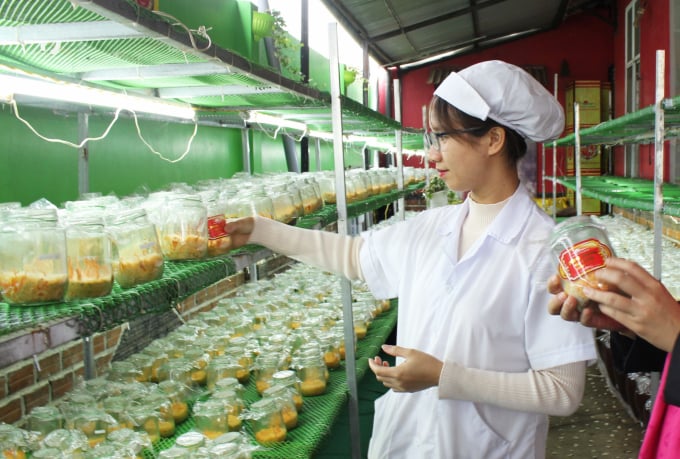
Cordyseps production is taking root in Lam Dong. Photo: DL.
Lam Dong has three main climate zones: altitude below 500m, altitude from 500-1,000m and over 1,000 m above sea level. At each altitude, climate conditions are suitable for some certain types of medicinal herbal plants which make diversity for the local medicinal herbal plants. In addition, Lam Dong has a diversity of forest resources with 513,000 hectares of forest soil. This is the potential for cultivating crops under the forest canopies.
Currently, Lam Dong's agricultural sector is researching and developing the cultivation of natural medicinal herbal plants under forest canopies such as Panax ginseng which are often found in the forests in mountainous district of Dam Rong, Multiflorous knootweed in the districts of Duc Trong, Don Duong.
Other species like yellow camellia, tavoy cardamom, and black turmeric are suitable to the model of growing plants under forest canopies. For these medical herbal plants, some enterprises, units are investing in the development of raw material areas
According to Lam Dong's Department of Agricultural and Rural Development, the province now has 59 firms buying medicinal herbal plants for processing with a total production of over 7,000 tons. In which, artichokes are in the highest demand with 45 enterprises and units involved in purchasing the product followed by cordyseps with 15 enterprises and lingzhi mushroom with 10 enterprises.

Artichoke farming models in Lam Dong bring profits of VND500 million per hectare to farmers. Photo: Minh Hau.
In term of economic efficiency, cultivating medicinal herbal plants likes artichoke, acanthopanax and female ginseng is more profitable than other crops like carrot, cabbage, lettuce or coffee; thereby improving local farmers' income.
An agricultural official made a comparison: on the same unit area of cultivation, growing artichokes can bring profits of more than VND500 million per hectare per year which is higher compared to VND190 million from growing carrots and VND400 million from growing cabbages.
Similarly, Lingzhi mushroom cultivation brings profits of VND665 million per hectare per year, profits of growing female ginseng are VND400 million per hectare per year, and VND329 million per hectare per year for the cultivation of acanthopanax.
According to Lam Dong's Agricultural Extension Center, the current difficulty in developing medicinal herbal plant in the province is the lack of concentrated production, trading and seed facilities. Some varieties can't be produced in locality and must be imported from abroad or other provinces.
Medicinal herbal plants are now cultivated on small scale and not in the planned areas. The production and consumption chains of medicinal herbal products are unsustainable. In the past time, buying was conducted through private traders which resulted in unstable prices and unclear requirements of quality standards.
Translated by Mai Tham

(VAN) Minister of Agriculture and Environment Do Duc Duy held a meeting with Soopakij Chearavanont, Chairman of C.P. Group, on May 15.
/2025/05/16/3800-0-nongnghiep-143756.jpg)
(VAN) Suntory PepsiCo Vietnam coordinated with the Ministry of Education and Training to implement an education program on water conservation, reaching nearly 1 million primary school students nationwide.
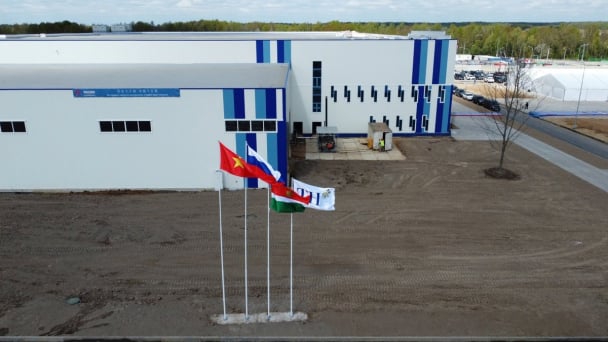
(VAN) Vietnam’s TH Group officially put its high-tech fresh milk processing plant into operation in the Russian Federation, marking a historic moment as the first TH true MILK cartons were produced in Russia.
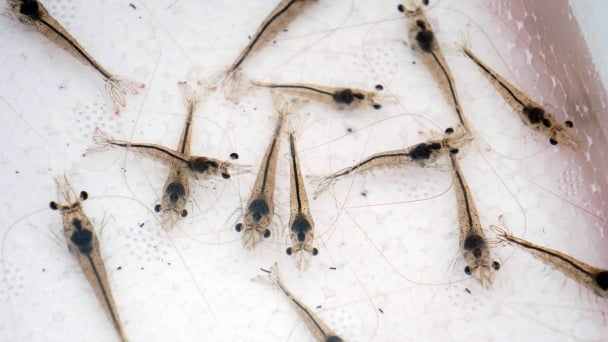
(VAN) Use of high-quality broodstock and biotechnology is regarded as the most effective approach to ensuring sustainable and economically viable shrimp aquaculture ahead of climate change and the emergence of increasingly intricate disease patterns.
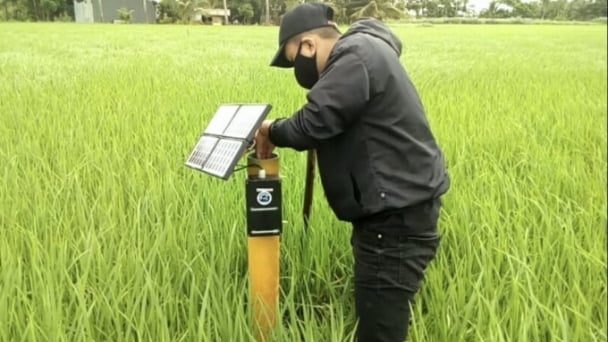
(VAN) Carbon farming is a form of agricultural practices that helps absorb more greenhouse gases than it emits, through smart management of soil, crops, and livestock.

(VAN) This is a key content of the Memorandum of Understanding recently signed between the Vietnam Fisheries Society and Kunihiro Inc of Japan.
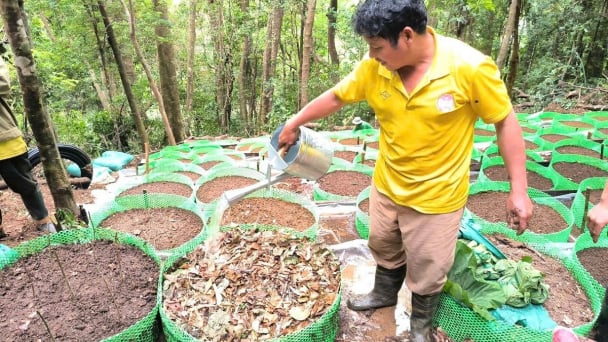
(VAN) To achieve the goal, local authorities and businesses in Kon Tum province have fully prepared the necessary conditions for the new Ngoc Linh ginseng planting season.